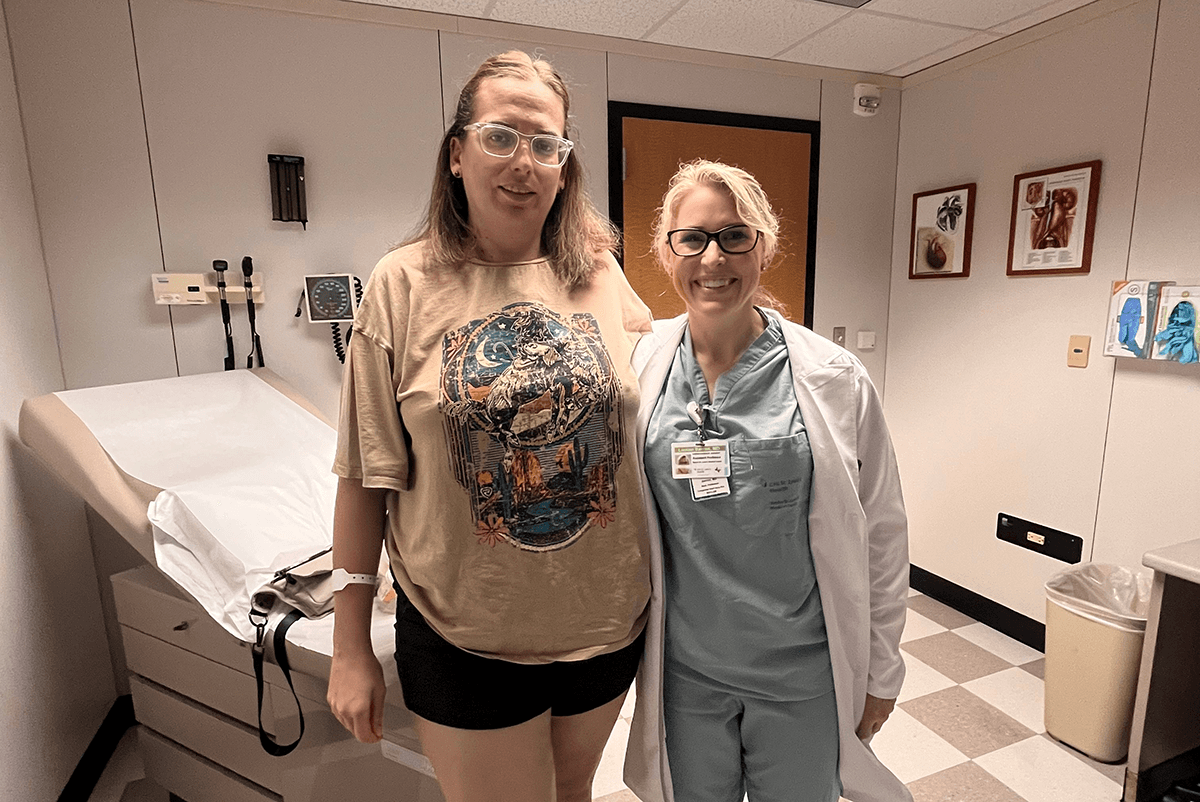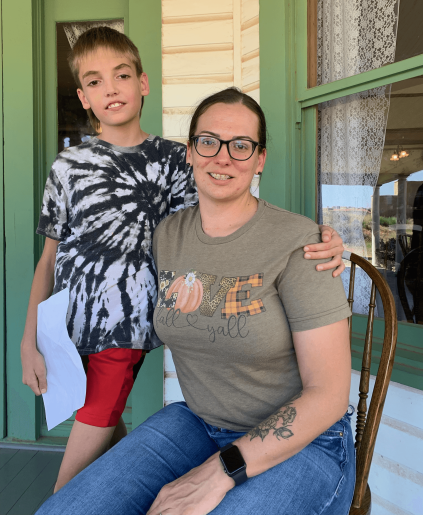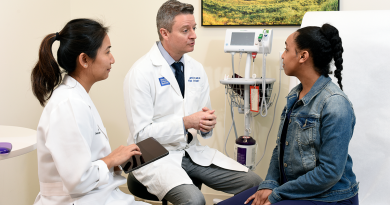Fighting for answers and life-saving aortic repair in Houston

Jessica Wilbourn noticed something unusual when her second son was born. Unlike his older brother, he shared several of her physical characteristics – a chest wall deformity and long, lanky limbs. At first, she brushed it off.
“Many people on my dad’s side of the family have long arms and legs,” Wilbourn said. “But the chest wall deformity stood out to me. My aunt mentioned that family members either had [a] pigeon chest or a caved-in chest, but I didn’t think much about it until my son turned 5.”
It wasn’t until she was studying health information technology that Jessica came across a small paragraph in her pathophysiology textbook about connective tissue disorders and Marfan syndrome.
“A light bulb went off,” she recalled. “I thought, ‘This is what my dad’s family has. This is what I have.'”
A mother’s fight for answers
 Concerned, Jessica raised the possibility of Marfan syndrome with her son’s pediatrician in their home state of New Mexico. But her worries were quickly dismissed.
Concerned, Jessica raised the possibility of Marfan syndrome with her son’s pediatrician in their home state of New Mexico. But her worries were quickly dismissed.
“She told me, ‘I don’t think your son has this. The testing is difficult and expensive, and they wouldn’t do anything about it until he was older.’ So, I let it go,” Wilbourn said.
Later, when her son saw a pulmonologist, she brought it up again.
“He dismissed me too,” she said. “Then I went to a geneticist, and the doctor looked at me – I’m 5’10” – and told me, ‘I don’t think you have it.’ He glanced at my 6-year-old son and said the same about him. He told me to check with my family to see if anyone had been diagnosed or tested.”
Wilbourn put her concerns aside until a devastating event forced her to confront them again.
“My sister, who is three years older than me, had an aortic dissection at 37,” she said. “When she was in the hospital, I told my mom and oldest sister to ask the doctors to test her for Marfan syndrome. She tested positive. After that, my son and I both got tested, and we were positive, too.”
Understanding Marfan syndrome
Wilbourn’s story is just one among thousands. Marfan syndrome affects approximately 20,000 to 40,000 individuals in the United States. The genetic disorder impacts connective tissue, and its physical manifestations vary widely among individuals. Some of the more noticeable signs include:
- Unusually long arms, legs and fingers
- A chest that sinks in or sticks out
- Curvature of the spine
- Flexible joints
- Vision problems due to lens dislocation
- Heart complications, including aortic enlargement
Finding the right care
Determined to get the best care, Wilbourn traveled to Houston’s Baylor St. Luke’s Medical Center from New Mexico in July 2024. She underwent a valve-sparing aortic root aneurysm repair to correct an enlargement of her aorta. Because Wilbourn was made aware of her genetic condition and sought timely surgical intervention, Dr. Lauren Barron, assistant professor in the Division of Cardiothoracic Surgery, was able to use Wilbourn’s native aortic valve rather than a mechanical valve, which prevented her from having to take a blood thinner. After five days in the hospital, Wilbourn was discharged and returned home to her family in New Mexico.
The healthcare journey to Houston changed Jessica’s life, and now she is back to living an active life with her family. “I had been made to feel like a hypochondriac for so long,” she said. “But Dr. Barron listened to me. She made me feel heard.”
Reflecting on her journey, Wilbourn can’t help but wonder if things could have been different.
“I talked to so many doctors, even a geneticist, and they all made me feel like nothing was wrong,” she said. “If we had found this sooner, maybe my sister wouldn’t have all the health issues she does now after her aortic dissection.”
Wilbourn knows firsthand how crucial early detection and proper medical care can be.
“Awareness is so important,” she emphasized. “Let people see a specialist. You can’t say for certain that someone doesn’t have a condition unless they’ve been tested. A referral could be lifesaving.”
Advocating for her son’s future
Wilbourn now applies everything she has learned to advocate for her son.
“He has a yearly echocardiogram and his doctor started him on Losartan (to reduce the risk of heart events and stroke),” she said. “Once he’s off his inhalers for asthma, they’ll put him on a beta blocker. If his echo shows any changes, they’ll do routine CT imaging.”
She has also found a pediatrician who understands the complexities of Marfan syndrome.
“She did a full workup, with referrals to ophthalmology, cardiology, neurology and orthopedics. She also wrote a detailed note for his school outlining his activity limitations and symptoms,” Wilbourn explained.
For those struggling to get proper care, Wilbourn urges persistence.
“Sometimes, it can take six months to see a specialist in New Mexico,” she said. “If you can’t get the right provider where you live, travel to where you can. Don’t stop pushing and advocating for yourself. You care about your health and your child’s health more than anyone else.”
Through her procedure, Wilbourn found comfort in the team at Baylor.
“Dr. Barron and the cardiothoracic surgery staff made me feel heard and supported,” she said. “That really helped ease my anxiety.”
Wilbourn hopes that by sharing her journey, more people will recognize the signs and push for early diagnosis and intervention.
“It’s worth it to go to a place like Baylor,” she said. “You need to get to the right person, get tested, and understand the disorder. I don’t regret my decision at all.”
By Gilda Martinez, instructor and nurse practitioner in the Michael E. DeBakey Department of Surgery – Division of Cardiothoracic Surgery.



